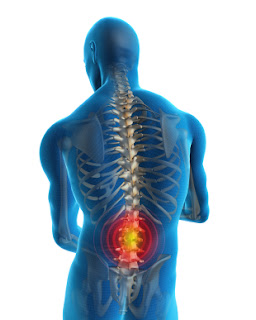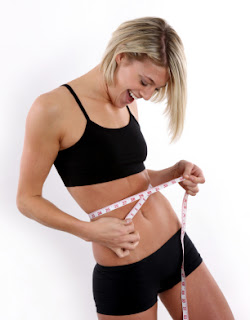Slim down with Accessible Beltway Clincs Chiropractors
To
successfully lose weight and keep it off, eating well and exercising are key
(the secret, of course, is to eat less and move more).
Accessible Beltway Clinics Chiropractors Recommend 10 Easy Weight-Loss Tips:
1. Slow down.
When eating,
it takes 20 minutes for your body to register fullness. And
according to a University of Rhode Island study, you can save 70 calories by
eating slowly over about half an hour versus eating in under 10 minutes. If you
ate slower at every meal, that would translate into losing about two pounds a
month. An easy way to slow down your eating is to put your fork down between
bites—or consider using chopsticks.
2. Use a smaller plate.
As serving sizes have increased, so have plate
sizes—and seeing appropriately sized portions swimming on a giant plate can
make you feel like you're not getting much food. Put your main meal on a 7-inch
plate, which is about the size of a salad plate or child-size plate. Choose a
1-cup dessert or cereal bowl instead of a soup bowl, a 6-ounce wineglass rather
than a goblet. When you’re eating out, ask for an extra salad plate and transfer
the proper-size portions of your food onto it when you’re served your entree.
Then ask the waiter to take away and wrap up the rest.
3. Eat breakfast.
Research
shows that regular breakfast eaters tend to be leaner and that dieters are more
successful at losing weight—and keeping it off—when they eat breakfast. Pack
your breakfast with protein and fiber—both will help keep you satisfied all
morning. Think: whole-wheat toast with peanut butter or an omelet stuffed with
vegetables.
4. Plan for the occasional treat.
Studies
suggest that feeling deprived—even if you are consuming plenty of calories—can
trigger overeating. And making any food off-limits just increases its allure.
So savor a small treat: it won’t break your diet! Two squares of dark chocolate
or ½ cup of (nonpremium) ice cream clock in at under 150 calories.
5. Step away from the screen.
Turn off the
TV and the computer and enjoy your meal without distractions. Making an effort
to be mindful, no matter what you’re eating, can help break the tendency to
overeat—and help you feel more satisfied. In a recent study published in the
American Journal of Clinical Nutrition, participants who ate lunch without distractions felt
fuller 30 minutes after eating, and ate less when they snacked later, than
people who played solitaire on a computer during their midday meal.
6. Eat water-filled foods.
Foods with
high water content—such as soups, salads, cucumbers and watermelon—help you
feel satisfied on fewer calories. (Interestingly, drinking water alongside
foods doesn’t have the same effect.) And research has shown that starting your
meal with a broth-based soup or salad (not drenched in dressing) may help you
eat less of your main course.
7. Snack on pistachios.
Studies show
that people who eat nuts tend to be leaner than those who
don’t, and a recent Harvard study revealed that nuts are a top food for driving
weight loss. In particular, unshelled pistachios are a great choice, as
removing the shells slows you down and seeing evidence of what you’ve eaten may
prevent you from reaching for more. In a recent study out of Eastern Illinois
University, people who were given unshelled pistachios consumed 41 percent
fewer calories than those offered nuts with the shells already removed. With
all nuts, be mindful of your portion size, as they’re calorie-dense: a 1-ounce serving of pistachios (49 nuts) contains
157 calories.
8. Up your fiber intake.
Increasing
your daily fiber intake can help you prevent weight gain—and possibly even
encourage weight loss—according to research out of Brigham Young University in
Utah. Over the course of the two-year study, the researchers found that people
who increased their fiber intake generally lost weight and those who decreased
the fiber in their diets gained. Adding fiber-rich foods, such as fruits, vegetables, beans and whole
grains, helps you feel satisfied on fewer calories; plus, filling up on
high-fiber foods usually means crowding out less-healthy, higher-calorie
choices.
9. Divide your plate—and you’ll stay satisfied longer.
Trim
calories without feeling deprived by dividing your plate like this: Fill half
the plate with low-calorie—yet satisfying, fiber-rich—vegetables. Divide the
other half of the plate into two equal portions (quarters). Fill one of these
quarters with a lean protein, such as chicken, fish, lean beef or tofu. (Research
suggests that, gram for gram, protein may keep you feeling fuller longer than
carbohydrates or fat.) Fill the other quarter with a filling, fiber-rich whole
grain, such as brown rice or quinoa.
10. Get 8 Hours of sleep.
Skimping on
shut-eye can pack on the pounds, possibly by altering hunger hormones. Other
recent research—out of Harvard—shows that missing even an hour or two of sleep
may make you more likely to give in to junk food the next day. Why? The
prefrontal cortex—part of the brain responsible for self-control—is compromised
by sleep loss.
Accessible Beltway Clinics Chiropractors










